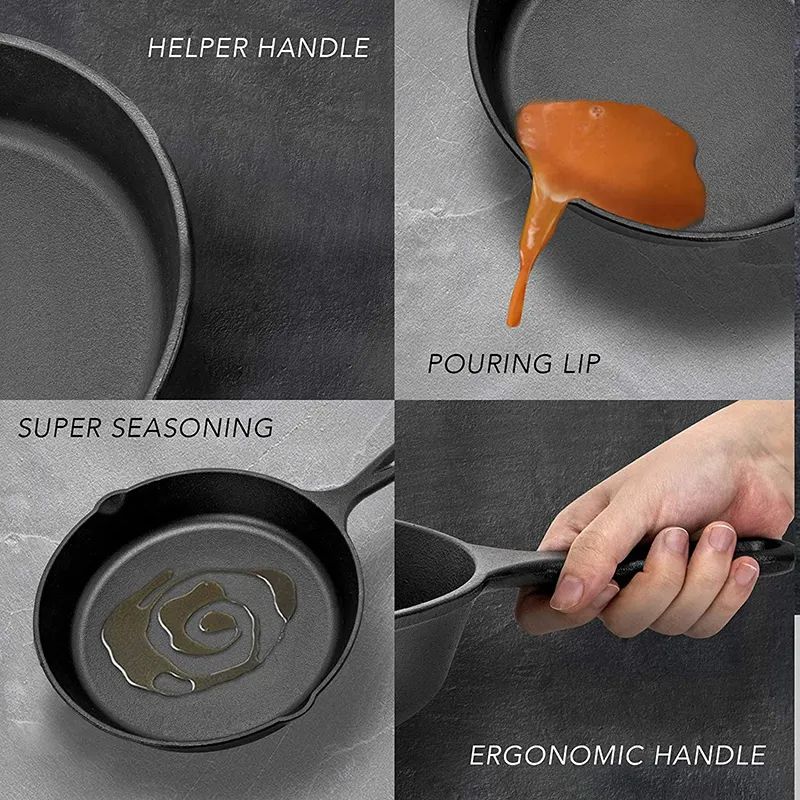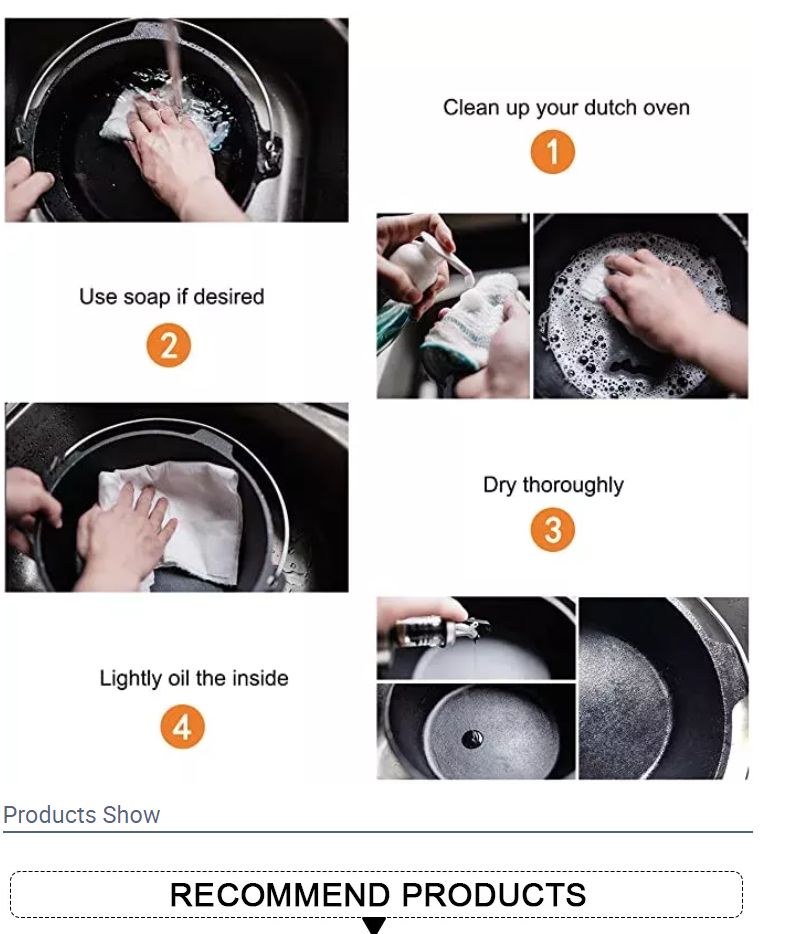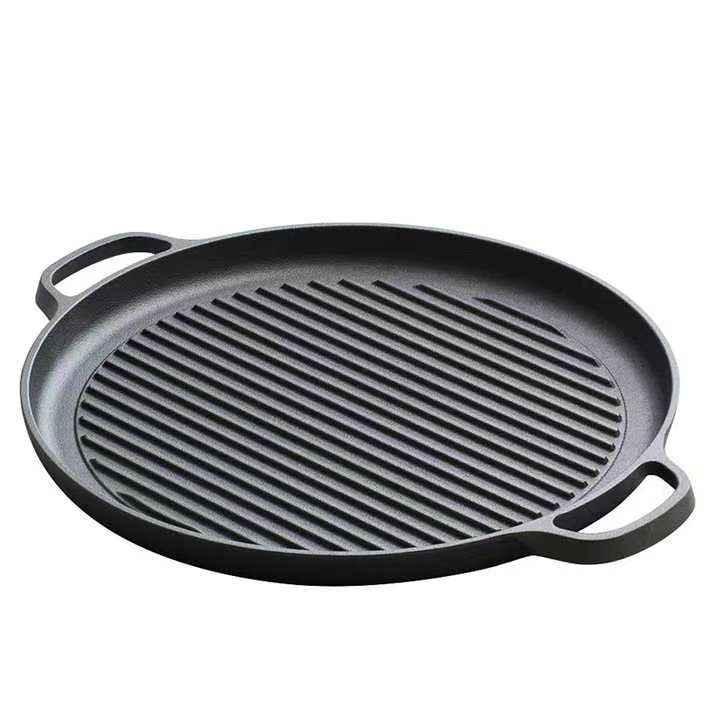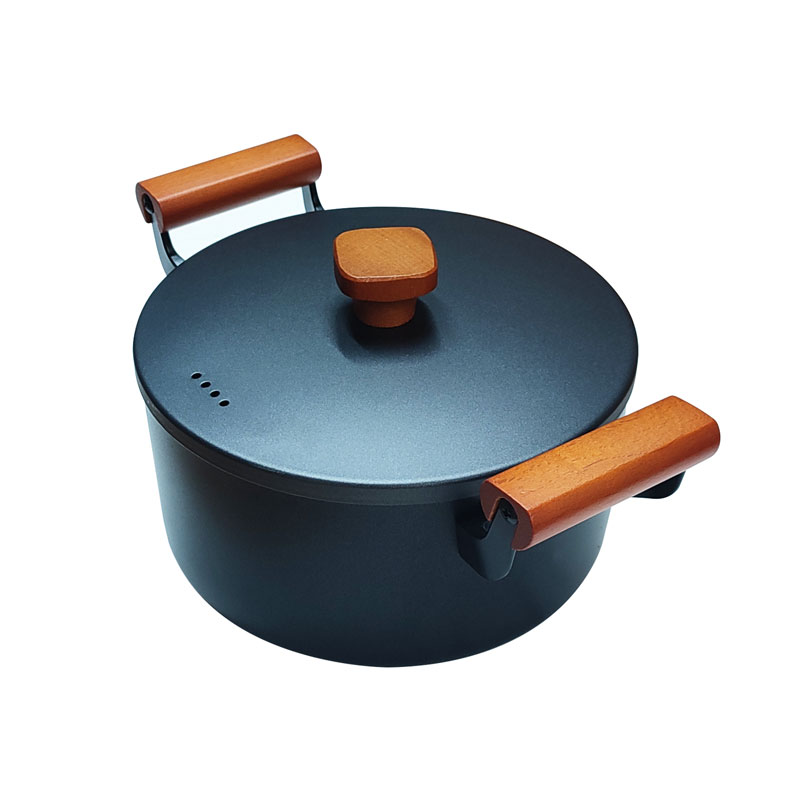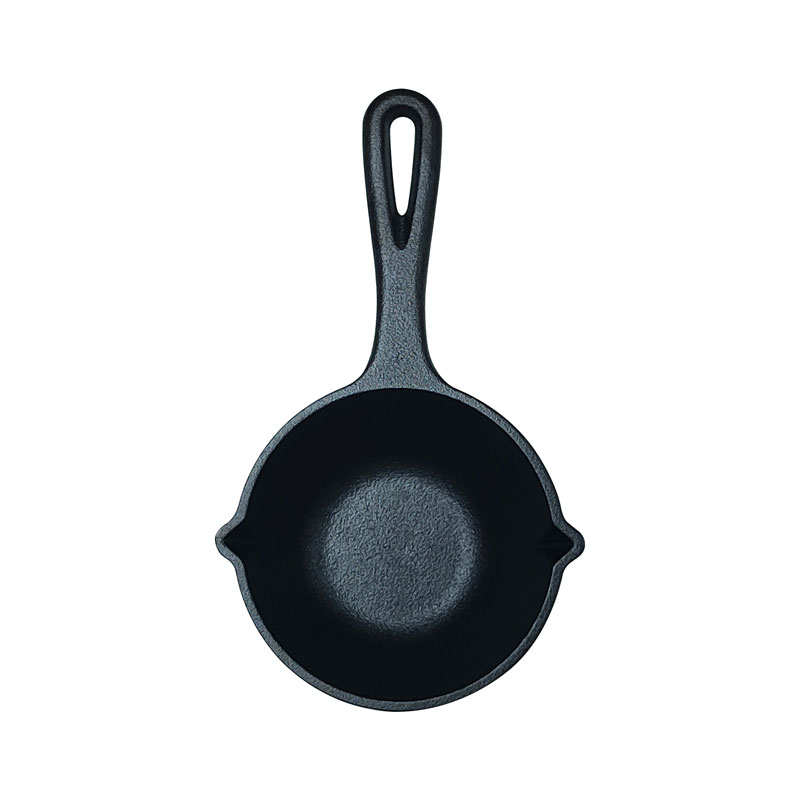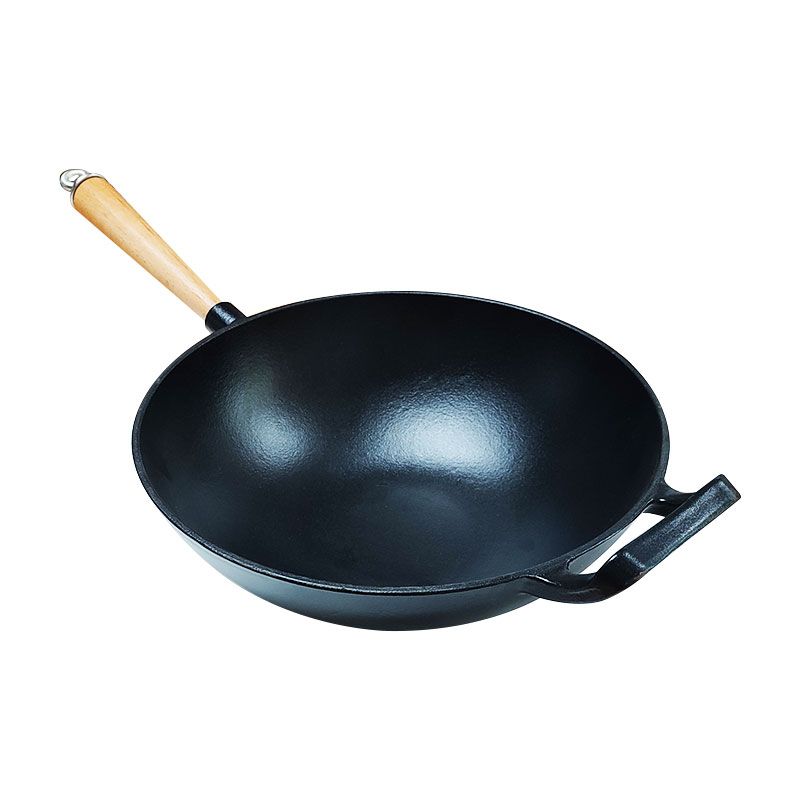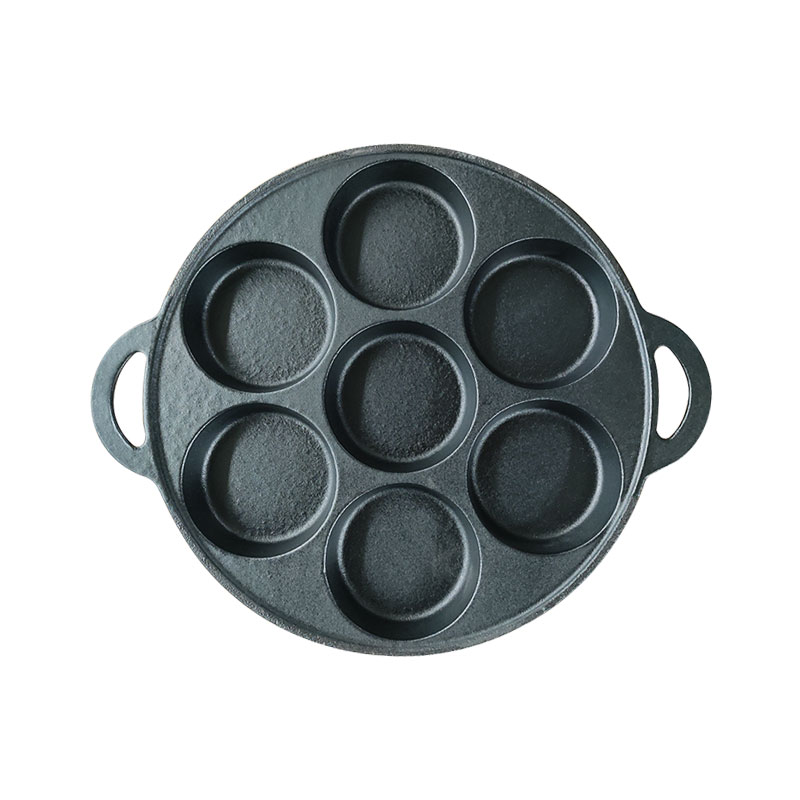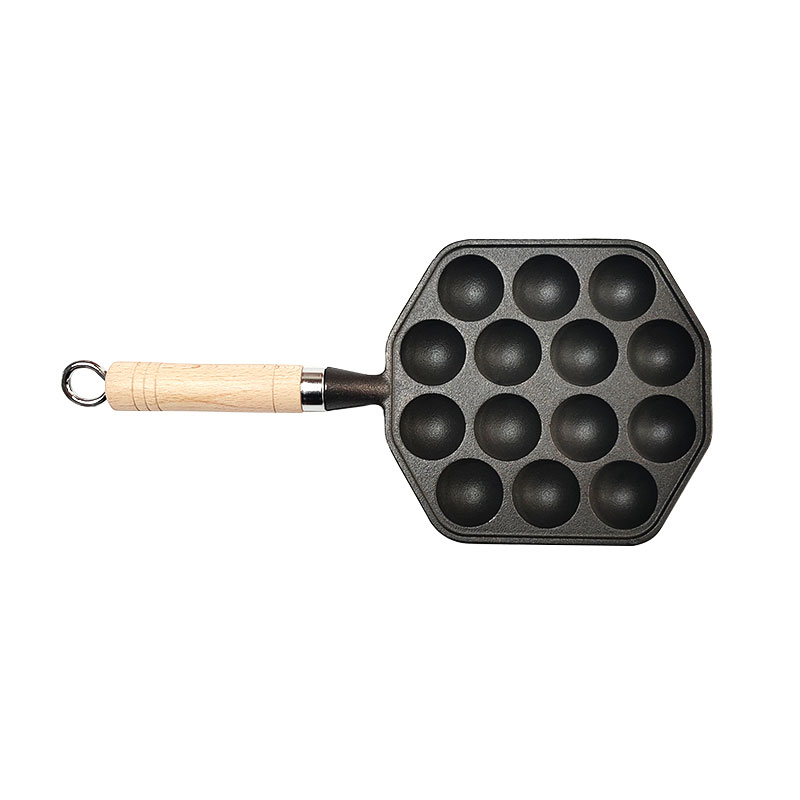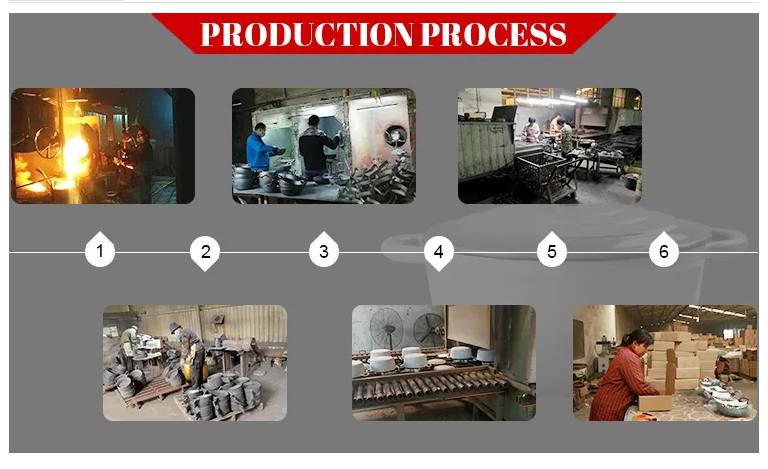Ze świadomością ochrony środowiska i dążeniem do piękna coraz więcej osób wybiera żeliwne naczynia kuchenne, zwłaszcza żeliwne naczynia kuchenne emaliowane. Żeliwne naczynia kuchenne emaliowane mają stosunkowo grubą powłokę emaliowaną, która nie tylko zwiększa funkcję wodoodporności i zapobiegania rdzewieniu, ale także zwiększa piękno produktu. Oczywiście, wybór żeliwnych naczyń kuchennych musi uwzględniać pewne kwestie, takie jak główne zastosowanie, rozmiar i waga pojemności itp., a następnie nie można ignorować użytkowania i późniejszej konserwacji.
Cast iron cookware szybko przewodzi ciepło, umożliwia równomierne podgrzewanie potraw, dzięki czemu są smaczniejsze, a także oszczędzają ciepło, są wygodniejsze w użyciu.
How to pre-season the new cast iron cookware
Boiling usually refers to the maintenance of a new cookware before its first use. The proper boiling procedure allows the cookware to be rust-free and non-stick for the rest of its life. So don’t rush to use the new cookware, need to be pretreated first.
Konieczność wstępnego przyprawiania
Cast iron cookware, in the process of production, the surface of the cookware will leave a lot of impurities, and in order to reduce the probability of rust and defective products, cast iron cookware is usually sprayed on the surface of the product at the factory with a thin layer of protective layer, which can prevent rust and can look more beautiful. For this protective layer, we should remove it before cooking and use, this process is what we commonly call “pretreatment”, at the same time, the maintenance of the cooker is also an important step in the use of cast iron cookware. In this process, we need to use vegetable oil: usually soybean oil or peanut oil. So how to save time and effort to maintain their use of cast iron cookware? We can try the following method, a piece of raw fat can be done, and the iron pot is clean, saving time and effort.The method to pre-season the new cast iron cookware
1, remove the label on the cookware body, wash the cookware body with running hot water; Dry the water (especially the bottom of the cookware) and place the cast-iron cookware on the stove over medium-low heat to dry.
2. Use the clamp to hold down the raw fat pork, use it as soap, and wipe it continuously in the cookware with a spiral shape, so that the spilled grease is evenly covered with the whole cookware surface.
3. With constant wiping, the cookware will spill more and more melted black lard, and the fat pork will become black and smaller.
4. Pour the lard, then drain the oil in the cookware, wash the cookware with hot water, and repeat steps two and three on the fire.
5, if the pork surface becomes hard, can use a knife to return to the surface of the piece in addition to continue to wipe; After each round of rubbing, the cookware will appear cleaner than before. Do this until the raw fat pork is no longer blackened.
Wash the iron cookware with hot water and then dry the water, put the cast iron cookware on the stove and dry it with a small and medium fire, then wipe a thin layer of vegetable oil with kitchen paper, carefully wipe the cast iron cookware from the inside out, and put it in a ventilated place to dry.
Today, with the improvement of people’s living standards, we have more kitchen cookwares and cookwares to choose from. Whether we go to the supermarket or choose online shopping, we can see a wide variety of commodities. cookware is inseparable from every family. There are many kinds of cookware. Many people now use cast-iron cookwares.
Środki ostrożności przy korzystaniu z naczyń żeliwnych
Unikaj barwienia jedzenia na czarno. Nowe cast iron cookware will stain the food black when it is used for the first time. At this time, you can rub the bean curd residue into the cookware a few times to avoid food contamination. It can also be refined in oil before formal use. Method: Pour in appropriate amount of oil, open fire until the oil is hot, turn off the heat, turn the cast iron cookware, make the oil stick to the wall of the cookware, wait for the oil to cool, scrub with water.
Get rid of the smell of the iron cookware. After cooking fish and other raw materials with fishy smell in cast iron cookware, it is difficult to remove the fishy smell in the cookware. At this time, you can put a little tea in the cookware and boil it with water, and the smell will be removed.
Aby usunąć smak żelaza cast iron cookware. A new cast iron cookware has an iron smell when it is used. A simple way to get rid of the iron smell is to boil a little of the yams in the cookware for a while, then throw it away and rinse the cookware with water. The iron smell is gone.
Skilfully remove grease from iron cookwares. Frying cookware used for a long time, the accumulation of burnt grease, with alkali or detergent is difficult to wash clean, how to do? As long as the fresh pear skin in the cookware with boiling water, cookware dirt will be easy to fall off.
If it is a newly bought iron cookware, after rust removal, you need to maintain the cookware. The method is to put the iron cookware on the fire and heat it, wipe it repeatedly with a piece of pork, and it can be seen that the lard is immersed in the cookware and appears black and bright.
Na koniec, podczas korzystania cast iron cookware, zaleca się podgrzanie go przed włożeniem jedzenia, aby jedzenie mogło być podgrzewane bardziej równomiernie. Należy również uważać, aby nie gotować kwaśnych i zasadowych produktów spożywczych, ponieważ te produkty łatwo reagują z żelazem, wytwarzając związki o niskiej zawartości żelaza, które mogą powodować zatrucie po spożyciu, wpływając na smak i zdrowie człowieka.










